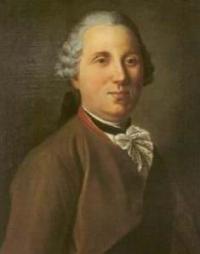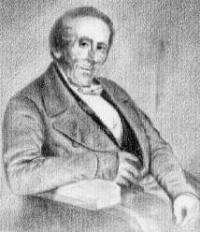You are here
Johann August Carl Sievers.


Organization of tours for Sievers apple tree in Kazakhstan.
“When I arrived at the foot of the mountain, the goddess Flora delighted me with a forest of the most beautiful dwarf apple trees, which grow wild here on both banks of Uljar. I forgot fatigue, heat, rockfall and everything else and drove into the apple trees like a goblin and began to feed. Forgive me for this playfulness, you know, I was born in the land of apples. During my four years in Siberia, I did not try other fruits except the wild pears growing on the other side of Lake Baikal, which they eat there instead of sweets for dessert with crushed sugar. But now those found were a good tartrate fruit, however, here, due to their wild state, they were crushed to the size of a bee's egg and have red and yellow cheeks. In Kyrgyz they are called “alma”. The three Siberian peasants who were with me were even more surprised.”
Johann Sievers. "Letters from Siberia".
Homeland of Sieversii apple tree is Kazakhstan.
“Sievers (Johann August Carl Sievers) - a learned pharmacist, a member of the Imperial Academy of Sciences and the Free Economic Society in St. Petersburg, traveled extensively in Siberia and compiled an interesting in many respects description of the country he visited in “Briefe ans Sibirien an seine Lehrer den königl.
Grosbritannischen Hofapotheker Herrn Brande, den königl. Grosbritannischen Botaniker Herrn Ehrahart und den Bergcomissarius und Rathsapotheker Hern Westrumb" (St. Petersburg, 1796). He died on March 23, 1795, and was buried in St. Petersburg.”
Encyclopedic Dictionary of Brockhaus and Efron. 1900.
Johann Sievers (Johann August Carl Sievers; 1762 - 1795) - explorer of the nature of Siberia, botanist, corresponding member of the Imperial St. Petersburg Academy of Sciences. Born into the family of a doctor in the German city of Peine on October 5, 1762.
He received a pharmaceutical education in Hanover and from 1773 to 1775 he worked as a pharmacy student in Hameln. In July 1785 he came to Russia, worked in pharmacies: first in St. Petersburg, in 1786 he moved to Moscow, in 1787 he returned to St. Petersburg, in 1788 - 1790 he was in Kronstadt.
He was elected a member of the Free Economic Society. In 1790, he was assigned to an expedition equipped by the Medical College for the botanical and resource study of Siberia. On instructions from the St. Petersburg Collegium, Johann Sievers arrived in Irkutsk on April 26, 1790.
He had the goal of traveling to many places in Siberia and Dauria in search and study of rhubarb as a medicinal plant. On June 5, Johann Sievers left Irkutsk. He reached Listvenichny, crossed Baikal on a galliot and then headed to Dauria.
Traveled until 1794 from the Urals to Dauria (Krasnoyarsk). The expedition lasted 4 years, from 1791 to 1794, the scientist explored the territories from the Southern Urals to the Abakan fort and to Kyakhta in Mongolia. In 1792 - 1794 he visited Barnaul, Biysk, Ust-Kamenogorsk, Tomsk, Semipalatinsk, and the Tarbagatai Mountains.
He collected a rich herbarium of plants from southern Siberia. He was especially involved in the study of local species of rhubarb (Rheum), which was one of the most popular and expensive herbal medicines - its Chinese species - Rhubarb officinalis.
To make itself independent from Chinese imports, the Medical College sought to introduce rhubarb from a Russian species into cultivation: Black Sea rhubarb (Rheum rhaponticum L.). In 1793, north of the lake, Zaisan carried out archaeological excavations of two burial mounds.
In March 1795, he was elected a corresponding member of the Imperial St. Petersburg Academy of Sciences and was sent to Bukhara and Tibet, but on the eve of his departure, on March 23 (April 3), 1795, he committed suicide.
The collected plants were stored in the Medical College in St. Petersburg (later the St. Petersburg Medical and Surgical Academy), but the collections were not preserved there. Separate parts of the collection were preserved in the Herbarium of the Botanical Garden and in the Academic Herbarium (now the Herbarium of the BIN of the Russian Academy of Sciences).
A specimen of an apple tree that he collected in Tarbagatai 225 years ago has been preserved and is in the herbarium of the Botanical Institute of St. Petersburg. Thanks to the efforts of Natalya Ogar (Kazakhstan, International Foundation for the Conservation of the Sievers Apple Tree, Center for Remote Sensing and GIS “Terra”), the herbarium was found and a photograph from it was delivered to Kazakhstan.
His “Letters from Siberia” (Briefe aus Sibirien) was published posthumously by P. S. Pallas in German in 1796 in St. Petersburg. The genus Sieversia from the Rosaceae family is named in honor of Johann Sievers, as well as about one and a half dozen species of plants, including Sievers wormwood, Sievers astragalus, Sievers kochia, Sievers apple tree.
The latest research at the genetic level has made it possible to establish that Semirechye, the mountains of the northern Tien Shan, are the ancestral home of the queen of northern fruits - the apple tree. It was from here that apple trees spread throughout Asia and Europe and, perhaps, the great-grandmother of beautiful varieties, thousands of years later, was the dichka, a modest tree called the Sievers apple tree, still growing in the foothills of the Zailiskiy Alatau.
The scientist who gave the name to the ancestor of apple orchards went down in history as a seeker of medicinal rhubarb. In 1792, he came to Kazakhstan Altai, visiting the Bukhtarma valley, visited the mountains near Lakes Markakol and Zaisan.
The following year he moved further south and reached the spurs of Tarbagatai. From Barnaul Sivers sent 18 letters to P.S. Pallas, in which he described his observations in the form of a diary. These travel notes were published by P.S. Pallas. In the eleventh letter, dedicated to Sivers’s trip to Tarbagatai in 1793, he describes with admiration the forest of wild apple trees he encountered growing along the Urjar River. He wrote that he was born in the land of apples and therefore was so delighted by the wild apple trees that he forgot fatigue, heat, rockfall and began to feast on them.
During his 4 years in Siberia, he almost never tried other fruits. The three Siberian peasants who accompanied him were also surprised. They've never seen anything like this. The herbarium material of the apple tree from Tarbagatai collected during the expedition was processed by K. Ledebur, who named it in honor of Sievers - the Sievers apple tree.
It was here, on the southern slopes, that he saw an apple tree, which three decades later was named after him by another very famous botanist and Altai explorer, Karl Ledebur. Johann Sievers, apparently, did not keep a diary, but regularly sent letters from the road (from Ust-Kamenogorsk, Semipalatinsk, Barnaul) to his fellow countryman, the famous traveler Karl Ledebur.
Later, after the death of the traveler and scientist, K. Ledebour published these letters and from them we know the entire course of the expedition of the rhubarb seeker. This is how he describes the discovery of apple thickets, which was a complete surprise to him.
“When I arrived at the foot of the mountain, the goddess Flora delighted me with a forest of the most beautiful dwarf apple trees, which grow wild here near Uljar on both banks of the river. I forgot fatigue, heat, rockfall and everything else and drove into the apple trees like a goblin and began to feast on them.
Forgive me for this playfulness, you know, I was born in the land of apples. During my four years in Siberia, I did not try other fruits, except for the similar pears growing on the other side of Lake Baikal, which they eat there instead of sweets for dessert along with crushed sugar.
But mine, now found, were good tartaric fruit, though here, because of their wild state, they are crushed to the size of a bee's egg and have red and yellow cheeks. In Kyrgyz they are called alma. I would like to pass off this variety as a new species.
The three Siberian peasants who were with me were even more surprised. They heard from their fathers, immigrants from Little Russia and Poland, frequent mentions of the many apples there, but they had never seen any themselves.
Be what you want! I have no doubt about the good future of my Tarbagatai apples in Siberia, especially around Ust-Kamenogorsk, where the land and climate are completely similar to the local one. If this is done in higher latitudes, then the inhabitants of Siberia could eventually have orchards and eat apples, which has not yet been possible.”
“Letters from Siberia” was first published in St. Petersburg in the 19th century in Old Germanic. Therefore, the book was first translated from Old German to modern German, and only then into Russian. The first reprint of the book took place in 2018 in Kazakhstan by the International Foundation for the Preservation of the Sievers Apple Tree; all 18 letters of I. Sivers were translated into Russian and English.
Publications of Johann Sievers (chronological order).
1. Sievers, J. Briefe ans Sibirien // Neue nordische Beyträge zur physikalischen und geographischen Erd- und Völkerbeschreibung, Naturgeschichte und Oekonomie. – St. Petersburg; Leipzig, 1796. – Bd. 7. S. 143 – 370. Reissue in German (separate reprint): Sievers, J. Briefe ans Sibirien. St. Petersburg: bey Johann Zacharias Logan, 1796. (2), 226 S. 1 l. ill.
2. Economic news. 1794. “A new continuation of the Proceedings of the Free Economic Society.” St. Petersburg, 1796. Part 2 (51). pp. 243 – 249. (Retelling of a letter from Barnaul from pharmacist Johann Sievers about his journey to the upper reaches of the Irtysh).







